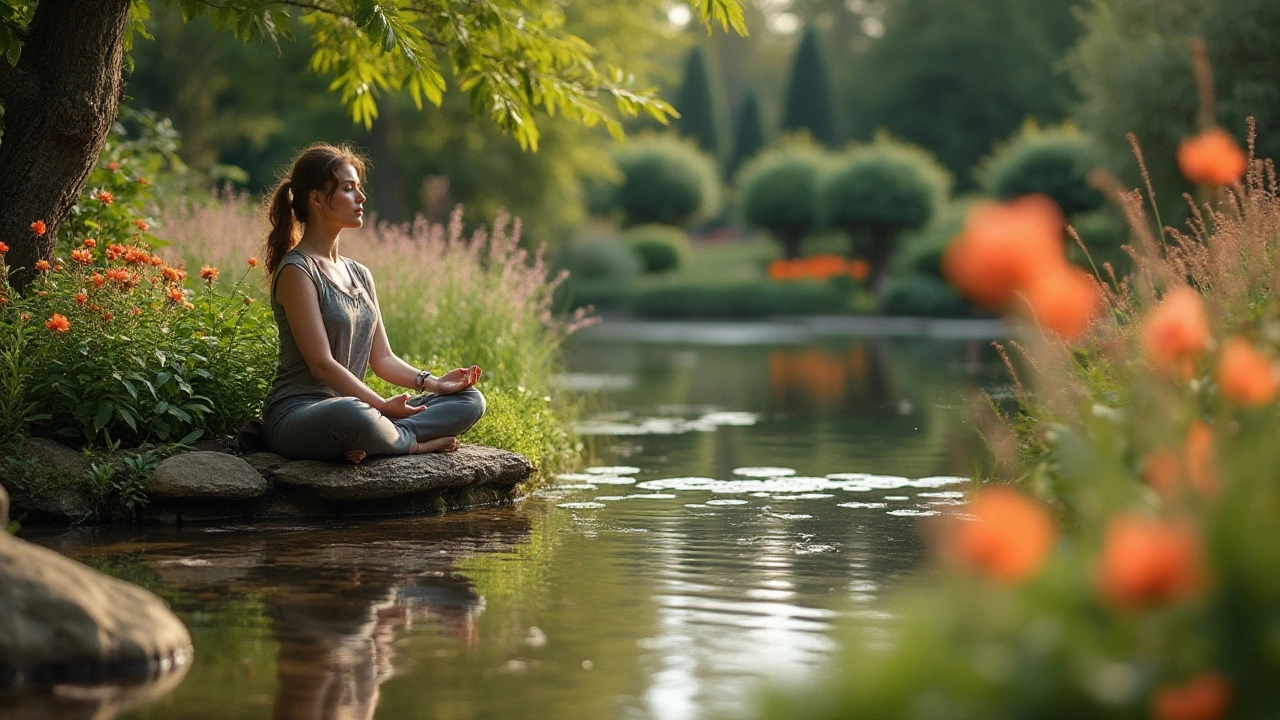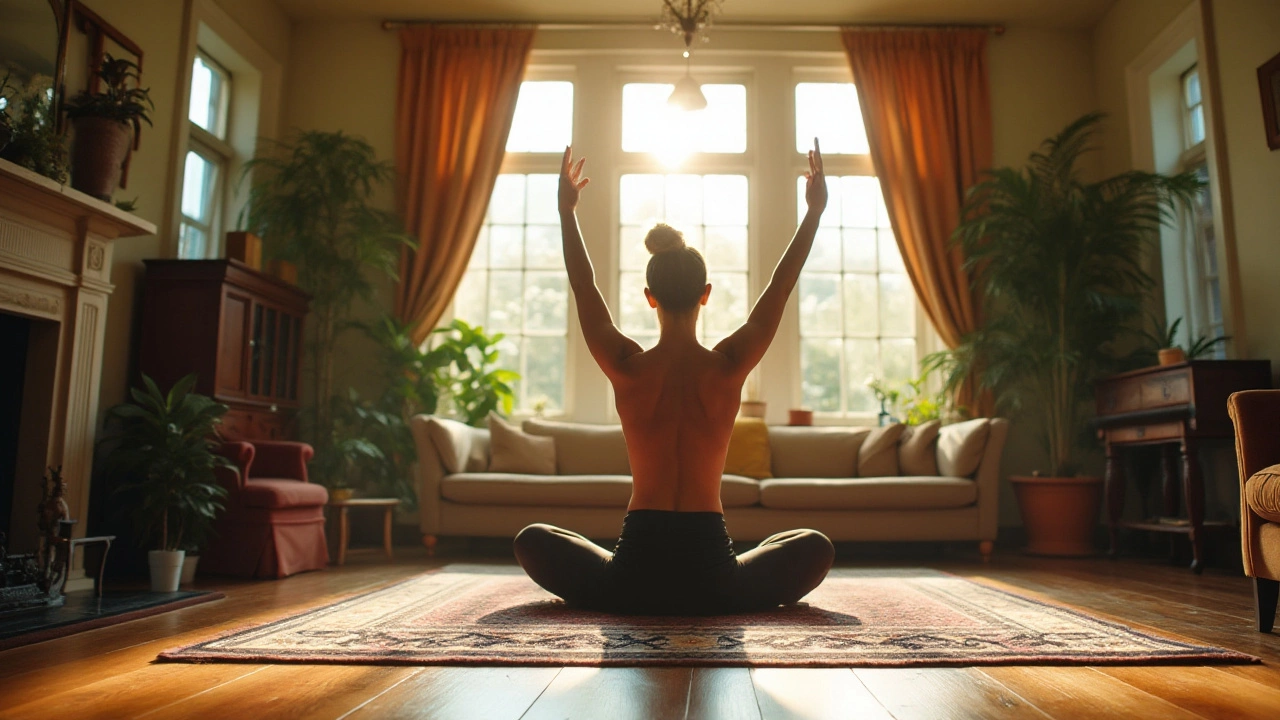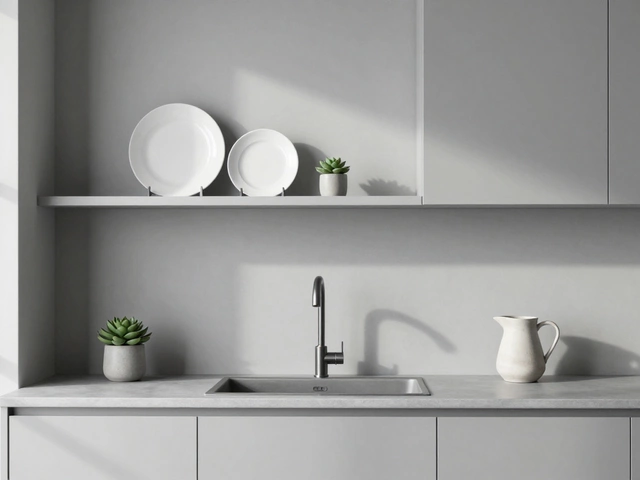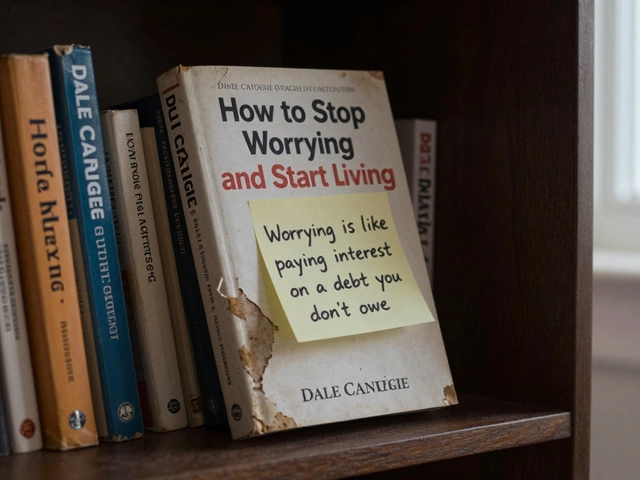In today's fast-paced world, staying grounded and present can often seem like an impossible feat. Mindfulness offers us a pathway to reclaim a sense of peace amidst chaos. Leading the charge in this pursuit are the Five R's of Mindfulness, a framework designed to help individuals cultivate a more conscious and intentional life.
These guiding principles provide a roadmap to enrich our daily experiences, enabling us to navigate life's hurdles with greater ease and insight. By immersing ourselves into the practice of Recognizing, Releasing, Relaxing, Re-aligning, and Re-engaging, we begin to nurture a powerful connection between our mind, body, and soul.
Join us as we delve into this transformative practice, offering insights and tips that illuminate the way toward a more mindful existence.
- Recognize: Awareness in Action
- Release: Letting Go of Tensions
- Relax: Cultivating Serenity
- Re-align: Finding Your True Path
- Re-engage: Living with Purpose
- Practical Tips for Implementing the Five R's
Recognize: Awareness in Action
The first step in the journey of mindfulness is achieving awareness, which begins with the simple yet profound act of recognition. Recognizing means observing the thoughts and emotions that drift in and out of our consciousness, accepting them without judgment. It prompts us to awaken from the autopilot mode that dominates our lives and cultivate a deep understanding of our internal experiences. It's akin to turning on a light in a dark room; suddenly everything is visible, and clarity emerges. The mind, much like a busy street, is constantly bustling with thoughts. To recognize is to stand on the sidewalk of your mind, watching the traffic of thoughts pass by, neither engaging nor confronting them—just observing their nature with curiosity and kindness.
This concept of awareness is deeply rooted in ancient philosophies and has been scientifically validated in recent decades. Studies have shown that practicing mindful recognition can lead to significant improvement in mental well-being, reducing symptoms of anxiety and depression. This process of recognition is essentially about heightening our awareness of the present moment. It involves paying attention to what is happening right now, rather than being fixated on past regrets or future worries. A study published in the journal "Mindfulness" found that individuals who practiced recognizing their thoughts and feelings had a heightened ability to deal with stressors, enhancing their emotional resilience. Recognition, thus, acts like a bridge connecting our conscious mind to the unconscious, creating a symbiotic interaction that promotes self-discovery and growth.
"Life is available only in the present moment. If you abandon the present moment you cannot live the moments of your daily life deeply." – Thich Nhat Hanh
Embarking on this journey towards awareness demands patience and practice. The art of recognition can be cultivated through simple mindfulness exercises. One such exercise involves sitting quietly and focusing on your breath. As you breathe in and out, notice any thoughts or feelings that arise. Label them gently—for instance, "thinking" or "feeling upset"—and then return your focus to your breath. This subtle shift from being caught up in a thought to merely recognizing it can lead to profound transformations. According to another research conducted at Massachusetts General Hospital, participants who engaged in consistent mindfulness practices, which included recognition, experienced changes in brain structures associated with memory, empathy, and stress regulation after just eight weeks. The practice of recognizing is not about eliminating thoughts or emotions but rather about learning to coexist with them, allowing each to unfold within its own space.
Release: Letting Go of Tensions
Life can often feel like a pressure cooker, filled to the brim with tensions and stressors that seem to cling to us like glue. Understanding how to release these burdens is crucial for anyone seeking a more mindful existence. One of the cornerstone practices of the Five R's involves the art of releasing, a process that encourages us to let go of mental and physical tensions, thus creating space for peace and healing. More than just a mental exercise, releasing can embody a physical dimension, requiring us to listen attentively to our bodies and acknowledge where we hold stress. Techniques such as deep breathing exercises, body scanning, and progressive muscle relaxation can serve as effective tools. By focusing intently on the areas of tension, we can consciously choose to let them go, often feeling a profound sense of lightness and relief in their absence.
Our modern lives, filled with perpetual motion and noise, leave little room for true relaxation. In his iconic book "Wherever You Go, There You Are," Jon Kabat-Zinn remarks on the significance of recognizing tension in the body:
"Stress is an unavoidable part of life, but it need not wash you away into a sea of disquiet."Navigating through the complexity of stress often demands deliberate practice. Daily habits such as mindful walking, journaling, or engaging in creative pursuits like painting or music can serve as gentle yet powerful outlets for releasing tension. Throughout this process, it becomes apparent that the act of releasing isn't about forgetting or erasing stressful moments but rather acknowledging them and choosing not to be governed by them. Over time, we become adept at differentiating between what serves us and what simply adds to our mental clutter.
If you ever find yourself unsure of where to start, consider setting aside a few moments in your day for intentional stillness. During this time, observe without judgment which areas seem to be crying out for release. It might be a tightness in your shoulders or a constant racing of your thoughts. Pay attention to these signals while employing deliberate techniques of stress release. Gradually, some people find it helpful to record their experiences in a journal to track progress and gain insights. Observing how the burden lifts with each session reinforces the power of releasing, transforming them into a living testament of your growth. Establishing a habit of periodic release not only enhances your present moment awareness, it also nurtures deeper self-compassion and resilience.

Relax: Cultivating Serenity
Finding moments of calm in our hectic lives is essential, yet often overlooked. The art of relaxation is not a mere luxury but a necessity for maintaining both physical and mental wellness. This step in the Five R's of Mindfulness invites individuals to immerse themselves in tranquility, creating a space where serenity flourishes. The process begins with identifying sources of stress and tension, allowing oneself the freedom to release these burdens and gently inviting stillness into one’s life. The benefits of mastering relaxation extend beyond the mind and influence the overall health of the body, including lowering blood pressure, decreasing heart rate, and fostering a more robust immune system. These physiological changes invariably contribute to an improved quality of life. Embracing mindfulness in relaxation encourages individuals to carve out moments of respite amidst the daily grind, crafting a sanctuary of calm within the chaos of modern existence.
It's crucial to establish a routine that prioritizes relaxation, as consistency lays the foundation for long-term happiness and balance. Techniques such as deep breathing exercises, progressive muscle relaxation, or guided imagery can serve as portals to this inner peace. The act of consciously slowing down one's breath helps to soothe the nervous system and anchors the mind to the present moment. Devoting as little as ten minutes a day to these practices can yield remarkable results, enhancing one's capacity to engage with life's complexities with clarity and poise. Consider building a ritual by lighting a candle, playing soft music, or practicing gentle yoga or Tai Chi to awaken the body to the flow of relaxation.
"Within you, there is a stillness and a sanctuary to which you can retreat at any time and be yourself." - Hermann Hesse
This timeless quote from Hermann Hesse perfectly encapsulates the essence of cultivating serenity within. The journey to relaxation often unfolds as a deeply personal exploration, guided by individual preferences and inclinations. Some find solace in nature, where the gentle rustling of leaves or the rhythmic crashing of ocean waves provide a natural balm for the spirit. Alternatively, creative endeavors such as painting, writing, or playing music can prove restorative, as they channel energies into creating beauty and joy. By integrating relaxation into daily life, individuals enrich their experiences and enhance their ability to weather the storms that come their way.
Studies have shown that relaxation techniques can significantly impact mental health by reducing anxiety and depression symptoms. A stress-filled life invariably leads to burnout and fatigue, yet prioritizing relaxation offers a potent antidote. Incorporating moments of peace and serenity throughout the day improves focus, enhances creativity, and sharpens cognitive abilities. It also fosters a deeper connection to oneself, encouraging self-discovery and acceptance. Learning to relax with intention invites a sense of clarity and empowers individuals to live more authentically and joyfully.
But achieving relaxation isn't always straightforward. It requires perseverance and practice. Individuals often encounter obstacles such as distractions, intrusive thoughts, or ingrained habits that resist change. Overcoming these challenges involves cultivating patience and self-compassion, recognizing that each effort towards tranquility contributes to personal growth. Transforming relaxation into a habit means approaching it with dedication and mindfulness, letting go of perfectionism and welcoming each step of the journey with curiosity and kindness. By gradually integrating relaxation into their lives, people enrich their mental and emotional landscapes, laying the groundwork for lasting peace.
The secret to unlocking these benefits lies in recognizing relaxation as a vital component of the Five R's of Mindfulness. By prioritizing serenity and integrating relaxation practices into the daily routine, individuals can create an environment where wellbeing thrives, nurturing both mind and spirit.
To optimize mindfulness during relaxation, it is advisable to set aside a dedicated space free from interruptions. This peaceful setting becomes a refuge, encouraging the mind to unwind and let go of daily concerns. Adjusting the environment by dimming lights and silencing devices can further support the transition into a relaxed state. The use of aromatherapy, such as lavender or chamomile oils, can enhance this soothing experience. Above all, it is essential to embrace this time with an open heart and a gentle acceptance of oneself, welcoming the nurturing embrace of relaxation.
Re-align: Finding Your True Path
Re-aligning is a fundamental step in the journey toward genuinely conscious living. This phase of mindfulness encourages us to step back and assess the trajectory we are on. Often, amidst the allure of daily routines and external expectations, we may find ourselves veering away from our authentic selves. By taking time to re-align, we not only recalibrate our actions but also reaffirm our values and intentions. The process of re-alignment involves quiet introspection and honest evaluation of where we are and where we truly aspire to be.
Re-alignment demands a commitment to authenticity. It invites us to listen to our inner voice and trust our intuition. We can do this by making space for stillness in our lives, encouraging the mind to wander towards thoughts that genuinely resonate with our essence. As we delve deeper into this practice, we begin to unravel layers of societal conditioning that may have clouded our judgment. This self-exploration isn't always comfortable, but it's vital for identifying patterns or beliefs that no longer serve our well-being.
According to research conducted by the HeartMath Institute, individuals who consistently practiced techniques to re-align with their inner values showed a marked improvement in psychological well-being, emotional balance, and even physiological health. This data underscores the profound impact that living in alignment with our true path can have. When we align our actions with our core values, it results in a harmonious existence where what we think, what we say, and what we do are in sync, leading to a more fulfilling and meaningful life.
Tools for Re-alignment
Implementing re-alignment into one's life requires practical tools and consistent effort. Start by journaling your thoughts and feelings. Reflect on what aligns with your current life's goals and passions. Engaging in meditation or mindful walks can help clear your mind, allowing your innate desires to emerge. It’s about drawing out the whispers of your soul amidst the noise of the external world. As you proceed, pay attention to moments or activities that foster joy and presence, recognizing them as guideposts on your path.
"The privilege of a lifetime is to become who you truly are." – Carl Jung
Another effective approach is setting intentions. Before starting your day, take a moment to affirm your goals for what lies ahead. Intention-setting cultivates focus and steers your daily actions towards your larger purpose. It acts as a gentle reminder of your commitment to stay aligned with your true self. Sharing these intentions with a mindful community can enhance accountability and serve as powerful encouragement on your journey.
Ultimately, finding your true path through re-alignment is a transformative journey, one that invites us to live more consciously. It’s a practice that flourishes with patience, trust, and a willingness to embrace the unfolding story of one’s life with curiosity and compassion.

Re-engage: Living with Purpose
Re-engaging with life through the lens of mindfulness involves immersing oneself in activities with a renewed sense of curiosity and vitality. This practice encourages individuals to take deliberate steps in aligning their actions with their values, creating a life filled with meaning and intention. Studies have shown that people who live with purpose experience greater life satisfaction and better mental well-being. In this fast-paced society, where it's easy to get lost in monotonous routines, taking time to consciously re-engage can be a game-changer.
Navigating the path to re-engagement often begins with asking introspective questions: What truly matters to me? Which activities make my heart sing? By pondering these prompts, individuals can identify activities or moments that align most closely with their core values. Dedicating time to these pursuits enriches life experiences and fosters authentic happiness. Engaging in such reflection has been shown to positively influence overall life satisfaction, cementing the notion that mindful living is key to personal fulfillment.
"When you have a sense of purpose, you don't have time for negativity because you're too busy pursuing what fulfills your soul." — Unknown
Engagement is uniquely personal, stemming from inherent desires and individual value systems. For some, this might mean cultivating an art practice, while others may find satisfaction in volunteering or cultivating meaningful relationships. The act of re-engagement invites individuals to approach life with intentionality, actively choosing tasks or commitments that align with their inherent values. This intentional living allows a person to experience a richer, fuller life that isn't dictated by external expectations but rather driven by internal aspirations.
Statistics show that individuals who engage in purposeful activities experience lower levels of stress and increased resilience, making it a worthwhile endeavor to explore. The process of re-engagement with purpose isn't just about introspection. It's action-oriented, suggesting practical steps that shift one from thought to deed. To reintegrate purpose into daily life, consider creating a list of meaningful activities or goals and dedicate time each week to these pursuits. This practice not only enhances your mindful living skills but also cultivates a lifestyle brimming with joy and purpose.
Practical Tips for Implementing the Five R's
Diving into the practice of the Five R's of Mindfulness is not merely a theoretical exercise—it is the lived experience of mindfulness itself. As we walk through each R, we must embrace meticulous understanding and actionable steps that seamlessly weave this practice into our daily lives. Practicality is the backbone of implementing these concepts, ensuring they become second nature through regular commitment and practice.
Recognizing the present moment demands focused attention, a skill honed through constant practice. To cultivate awareness, allocate specific times of the day to check in with yourself. Notice your thoughts and how your body feels, gently labeling any emotions or sensations you detect. Journaling can be an effective tool here. By noting down daily observations, patterns emerge, unveiling aspects you might have overlooked. As Jon Kabat-Zinn, a leader in the mindfulness movement, says,
“You can’t stop the waves, but you can learn to surf.”This surfboard in life is recognizing, a process that enriches your emotional and psychological toolkit.
Next is the art of Releasing. Our fast-paced lives often lead to built-up stress, which manifests physically and mentally. Through simple but consistent practices like mindful breathing, you can encourage the body to let go of tension. During breathing exercises, aim to exhale longer than you inhale, activating your body's relaxation response. Here's a quick step-by-step guide you might find useful:
- Find a comfortable seated position.
- Inhale deeply through your nose, counting to four.
- Hold your breath gently for a count of two.
- Exhale slowly through your mouth, extending up to a count of six.
- Repeat this cycle for five to ten minutes.
When focusing on Relaxing, creating an environment conducive to calmness is vital. Consider designating a space in your home dedicated to tranquility. Adding elements like soft lighting and calming scents can significantly impact your relaxation experience. Another useful strategy is to engage in progressive muscle relaxation, starting from your toes and working your way up, consciously releasing tension from each muscle group. This technique, combined with deep breathing, can amplify the soothing effects of mindfulness.
In the realm of Re-aligning, aligning your actions with your core values is key. Begin by identifying what truly matters to you. These values should reflect in your decisions and daily habits. Visualization exercises can support this process; imagine yourself living your ideal life, what decisions align with this vision, and what may need adjusting? An actionable approach is to set small, value-based goals, providing direction and clarity as you re-align with your path.
Finally, to Re-engage with intention and purpose, actively seek activities that imbue your life with joy and fulfillment. This could mean dedicating time to a hobby you’re passionate about or volunteering for a cause close to your heart. The continuous cycle of engaging intentionally not only enhances personal gratification but also strengthens your commitment to living mindfully. A statistic from a 2022 study found that individuals who engage in meaningful activities experience a 22% increase in life satisfaction, underlining the importance of living with purpose.
The journey through the Five R's is deeply personal and transformative. By embracing these practical tips, you stand to gain unprecedented insight into your own life, ultimately fostering a profound sense of peace and presence. Remember, the heart of mindfulness is found in the gentle, unyielding presence of the moment, reminding us that each step on this journey is both the means and the end.










